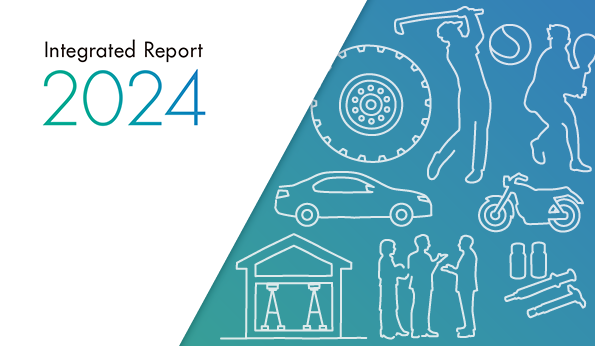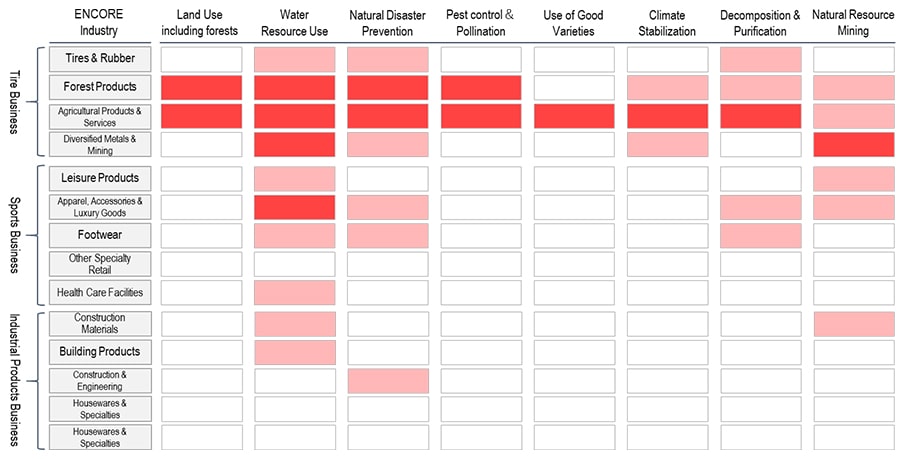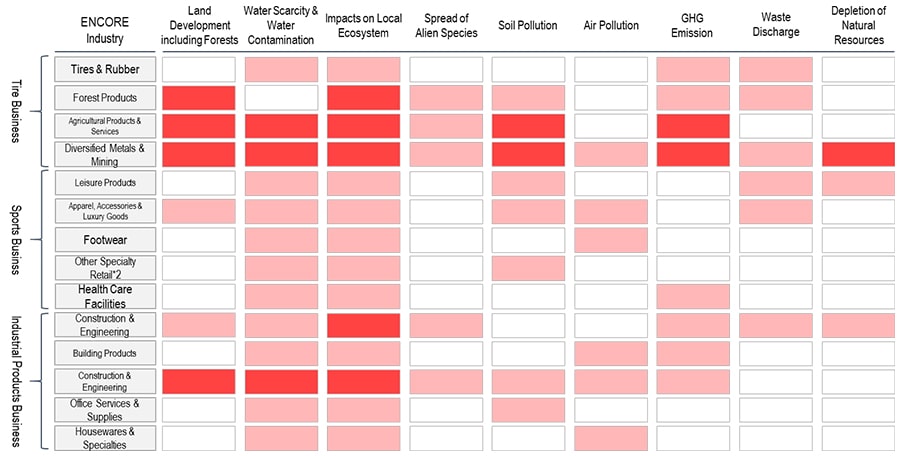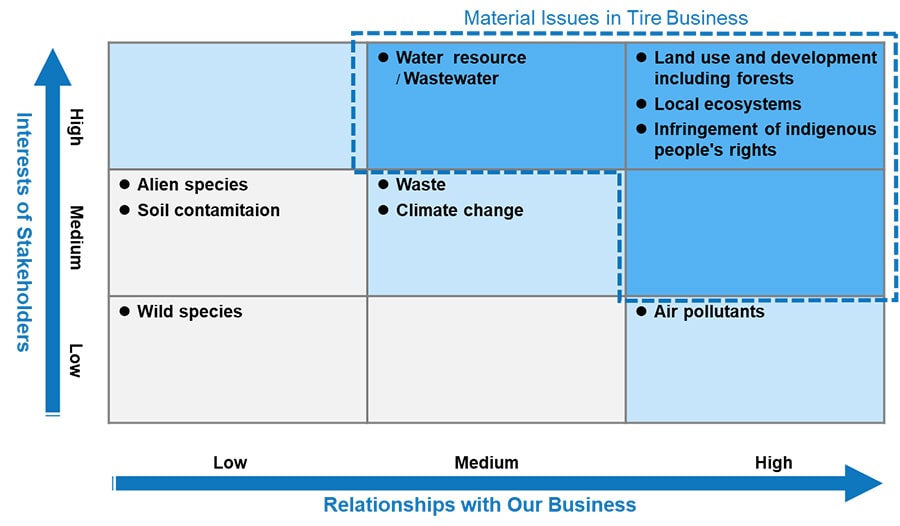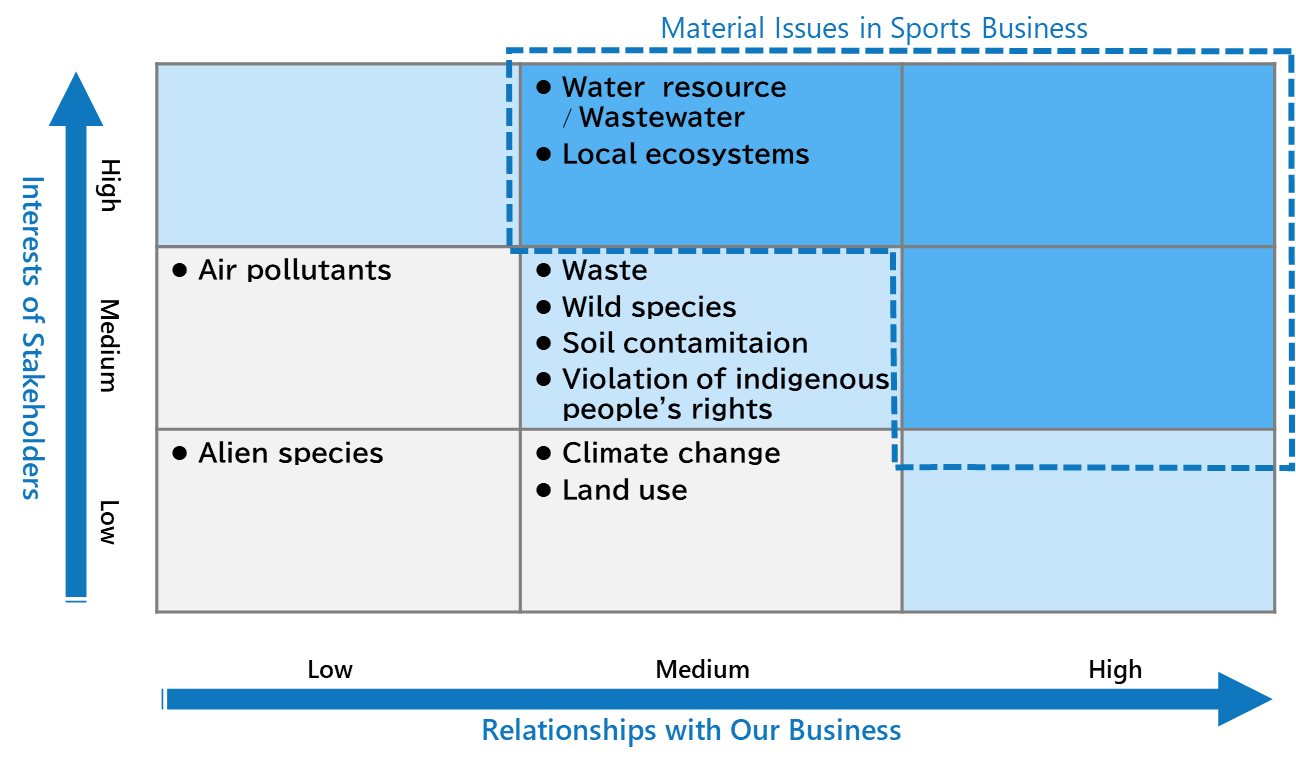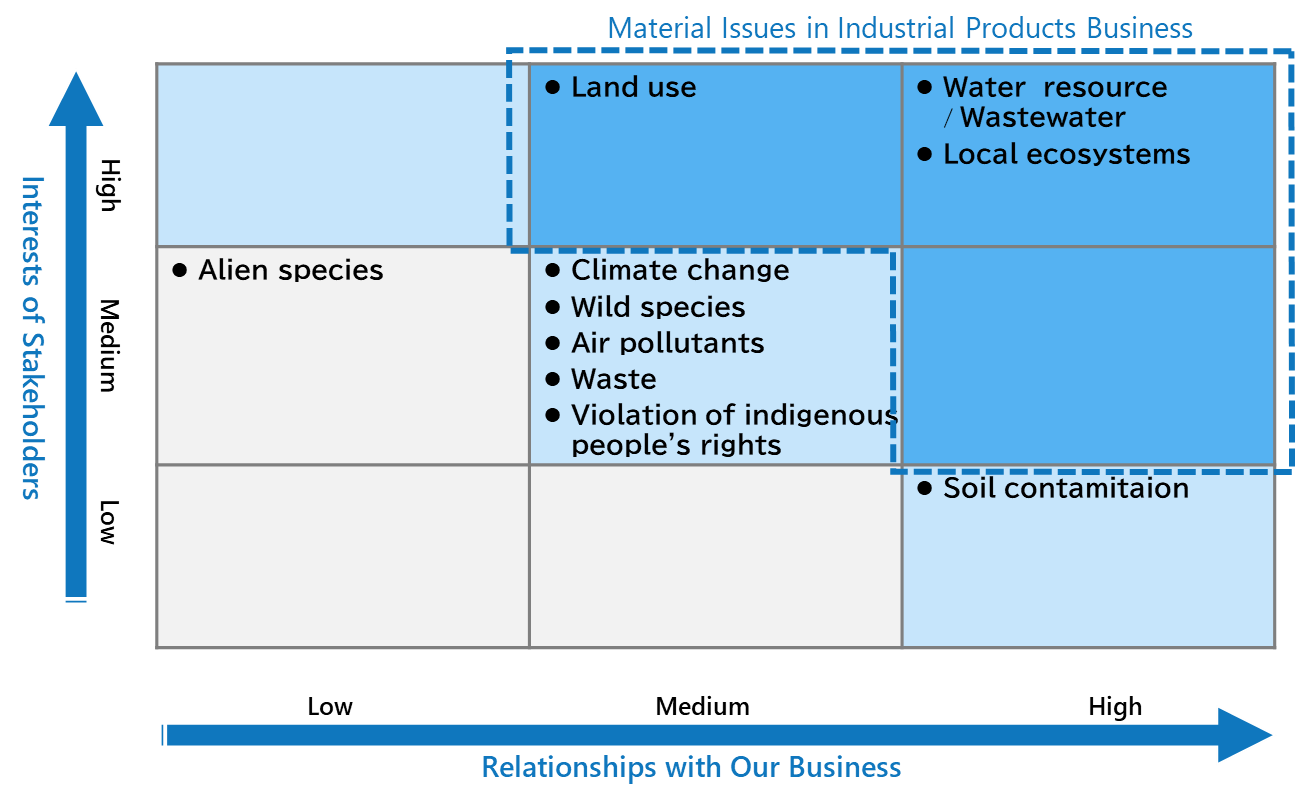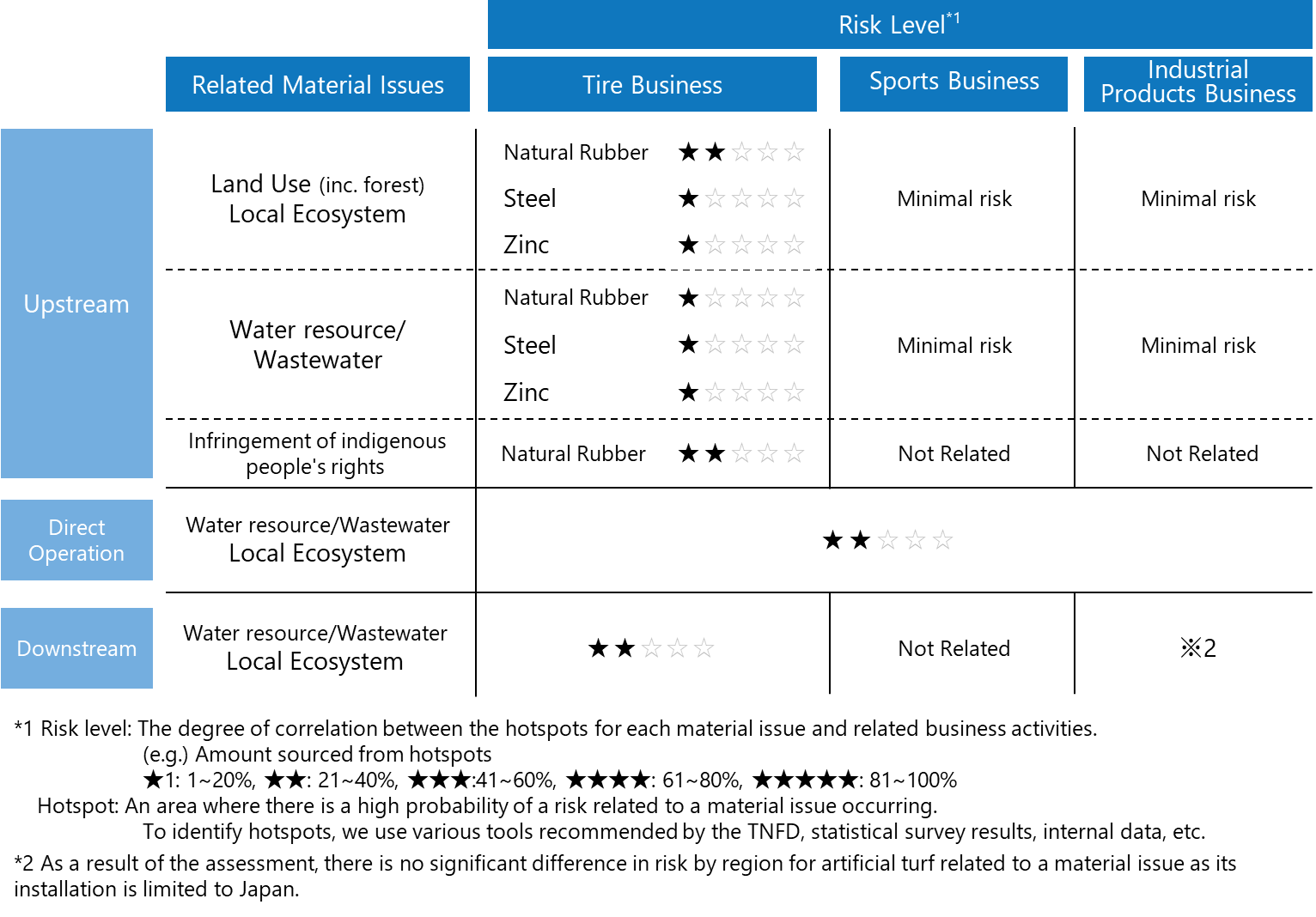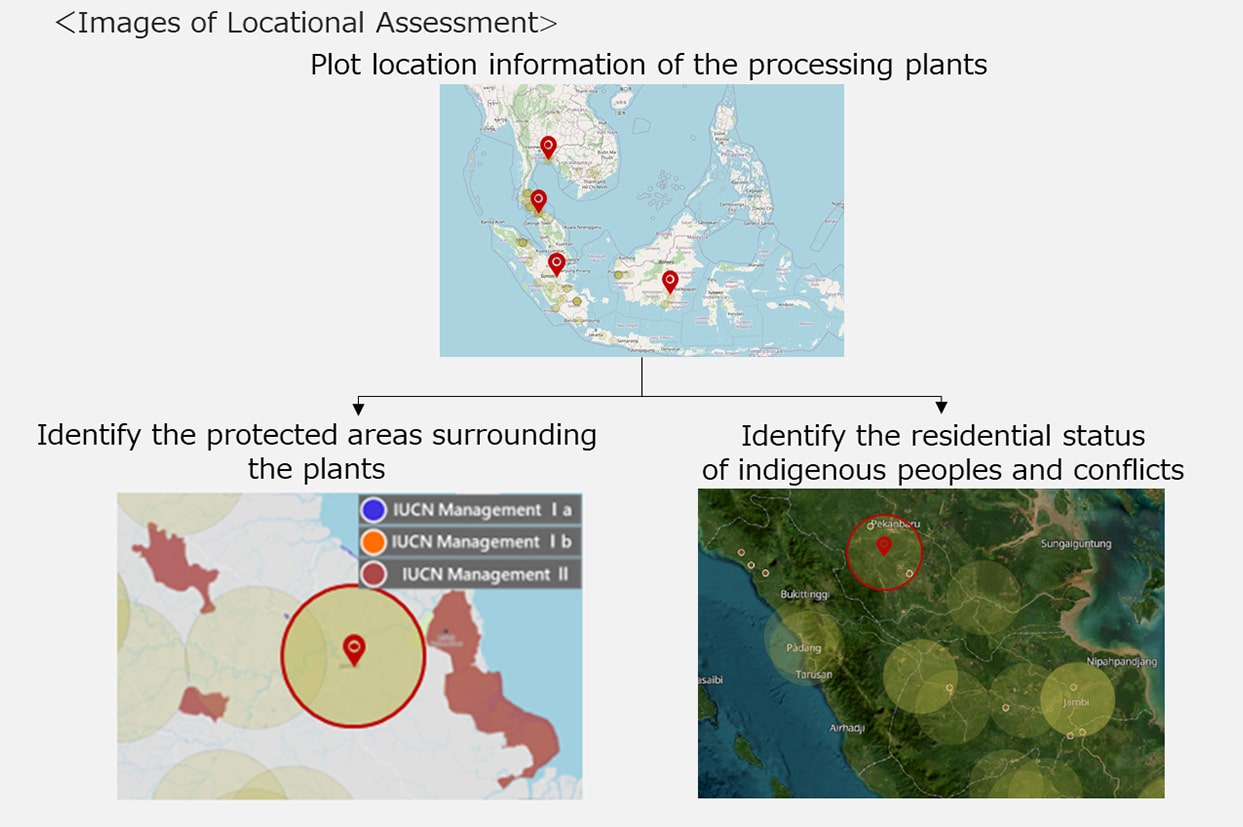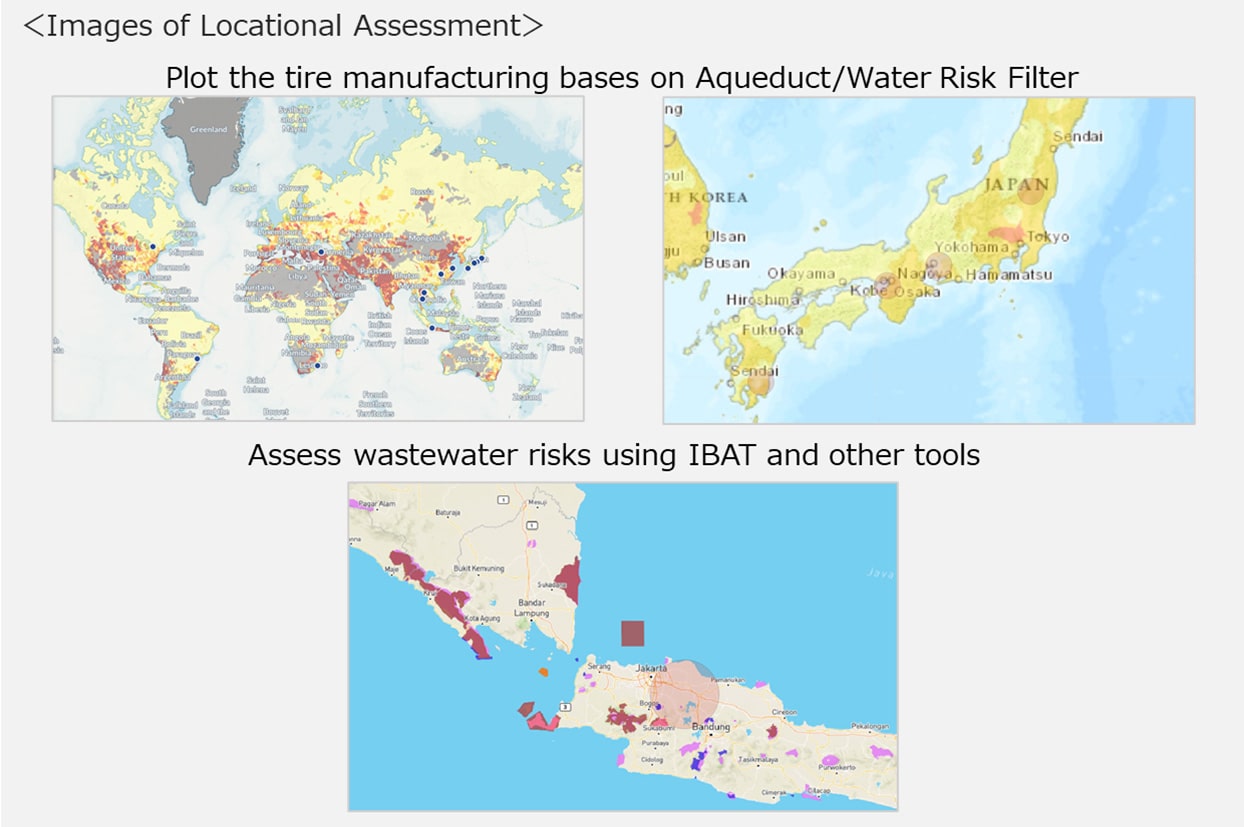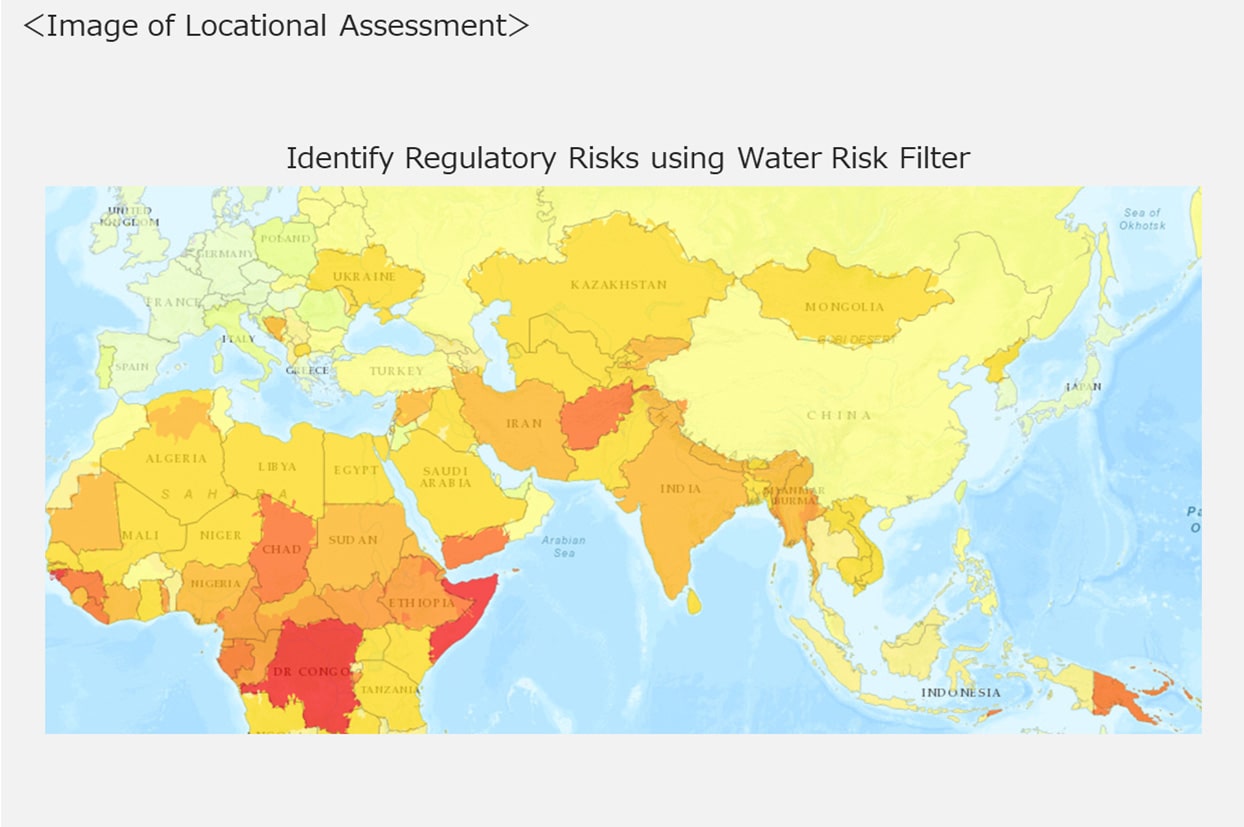| Transition Risks |
Policy |
Introduction & strengthening of regulations |
- 1. Restrictions on the sale of products that could contribute to deforestation, increased costs of complying with stricter regulations on raw materials, TRWP and microplastics, and regulations on water abstraction and wastewater
|
short-medium |
- Initiatives to ensure traceability of natural rubber
- Promoting the widespread adoption of runoff control technology based on insights gained from proof-of-concept experiments aimed at suppressing microplastic runoff from sports artificial turf, and developing fillers derived from natural materials
- Setting a target of 100% wastewater recycling at production sites with high water risk by 2050
|
| Market |
Rising raw material prices
Changes in consumer behaviour |
- 2. Higher procurement costs for natural rubber and other raw materials (e.g. metals) due to increased ecosystem protection costs
- 3. Change in plan to develop rubber plantation due to public opposition over impact on ecosystem
- 4. Avoidance of purchasing products with high environmental impact
|
short-medium |
- Supporting natural rubber farmers in collaboration with natural rubber suppliers
- Environmental and social risk assessment of rubber plantations using RubberWay®
- Formulating a “Sustainable Natural Rubber Policy” in accordance with the GPSNR Policy Framework
|
| Technology |
Development and diffusion of technologies with low environmental impact |
- 5. Increased R&D costs for raw materials for tires with lower environmental impact
- 6. Increased R&D costs to prevent the generation and runoff of microplastics from artificial turf
|
short-medium |
- Expanding sales of retreaded tires
- Developing and disseminating low-cost microplastic runoff control technology for sports artificial turf, and developing natural material fillers
- Joint development aimed at producing new rubber raw materials from tires and other waste using technology from a US company.
|
| Reputational |
Worsening in reputation among investors, consumers, and society |
- 7. Loss of customers and decline in corporate image and ESG ratings when seen as being passive about ecosystem conservation efforts
- 8. Divestment from investors and financial institutions when seen as being passive about biodiversity initiatives
- 9. Decrease in ESG evaluation due to failure to meet evaluation criteria for biodiversity set by ESG evaluation organizations
|
medeium-long |
- Obtaining 'Certified Sustainably Managed Natural Sites Sustainably Managed Natural Sites' certification from the Ministry of the Environment of Japan for factories
- Conservation activities for endangered, semi-endangered and rare species at a total of eight sites in Japan, including factories
- Sharing the results of proof-of-concept tests on microplastic runoff from sports artificial turf to municipalities and professional sports associations, and educating them on runoff control measures
|
| Liability |
Liability arising from developments in legislation and case law |
- 10. Liability and administrative penalties following the strengthening of existing laws and regulations or the introduction of new laws and regulations
- 11. Liability from public opposition to ecological impacts during the development of rubber plantations
- 12. Suspension of raw material supply due to lawsuits and administrative penalties resulting from environmental impact caused by mining development and operations
|
short-medium |
- Initiatives to ensure traceability of natural rubber
- Environmental and social risk assessment of rubber plantations using RubberWay®
|
| Physical risk |
Acute |
Increase in natural disasters |
- 13. Suspension of production due to damage to own manufacturing sites
|
short-medium |
- Formulating BCPs for headquarters, overseas and domestic manufacturing sites, and domestic subsidiaries
|

